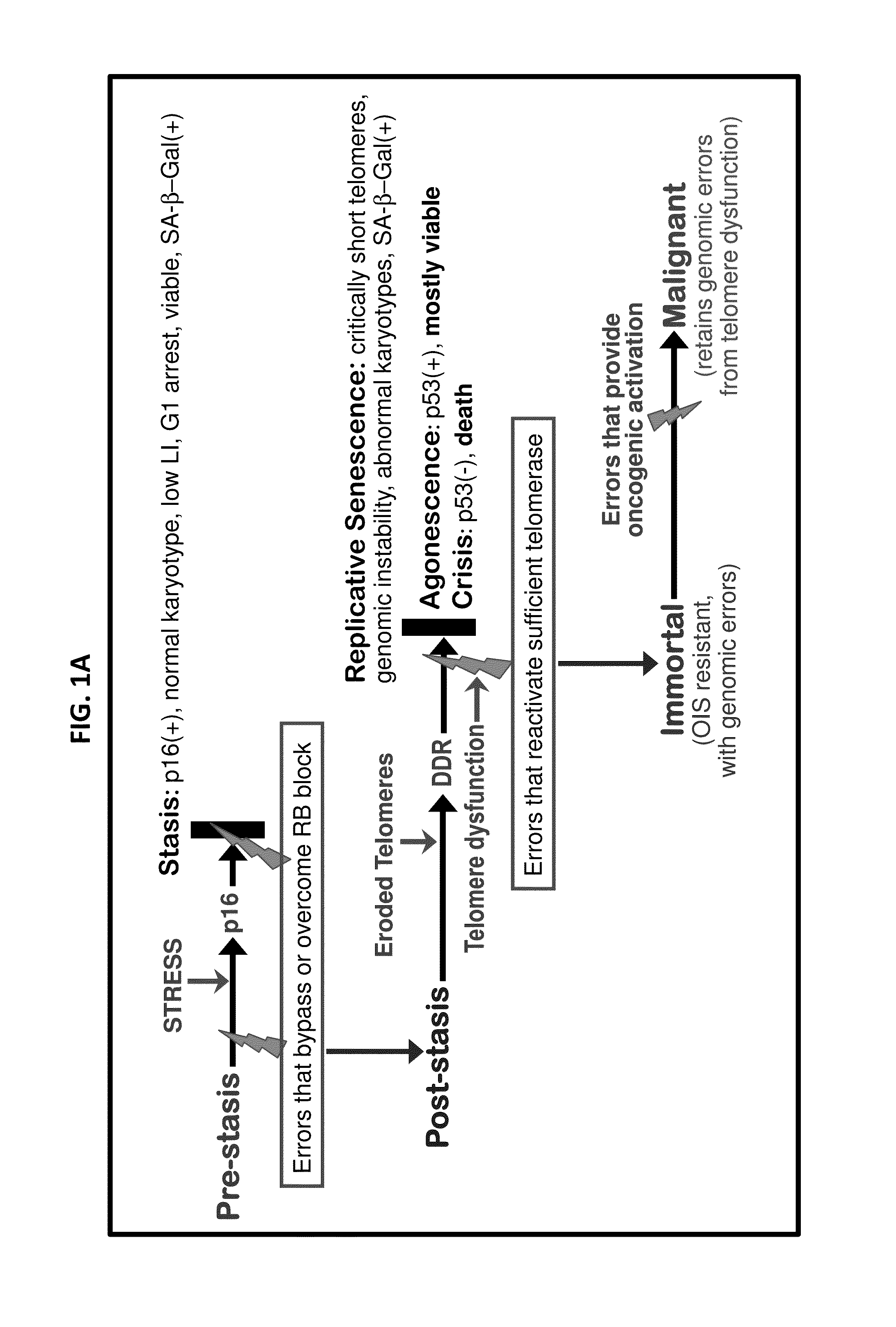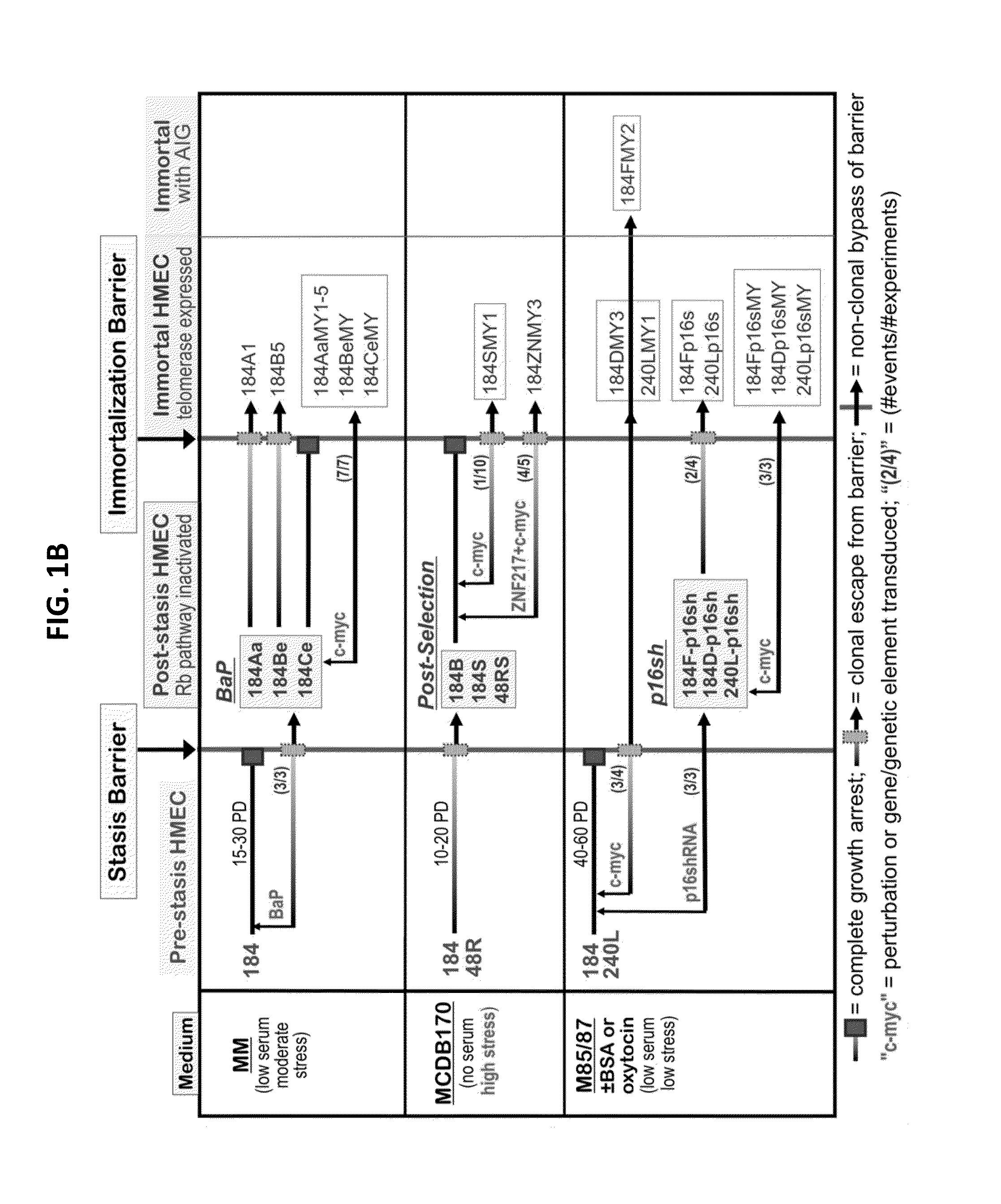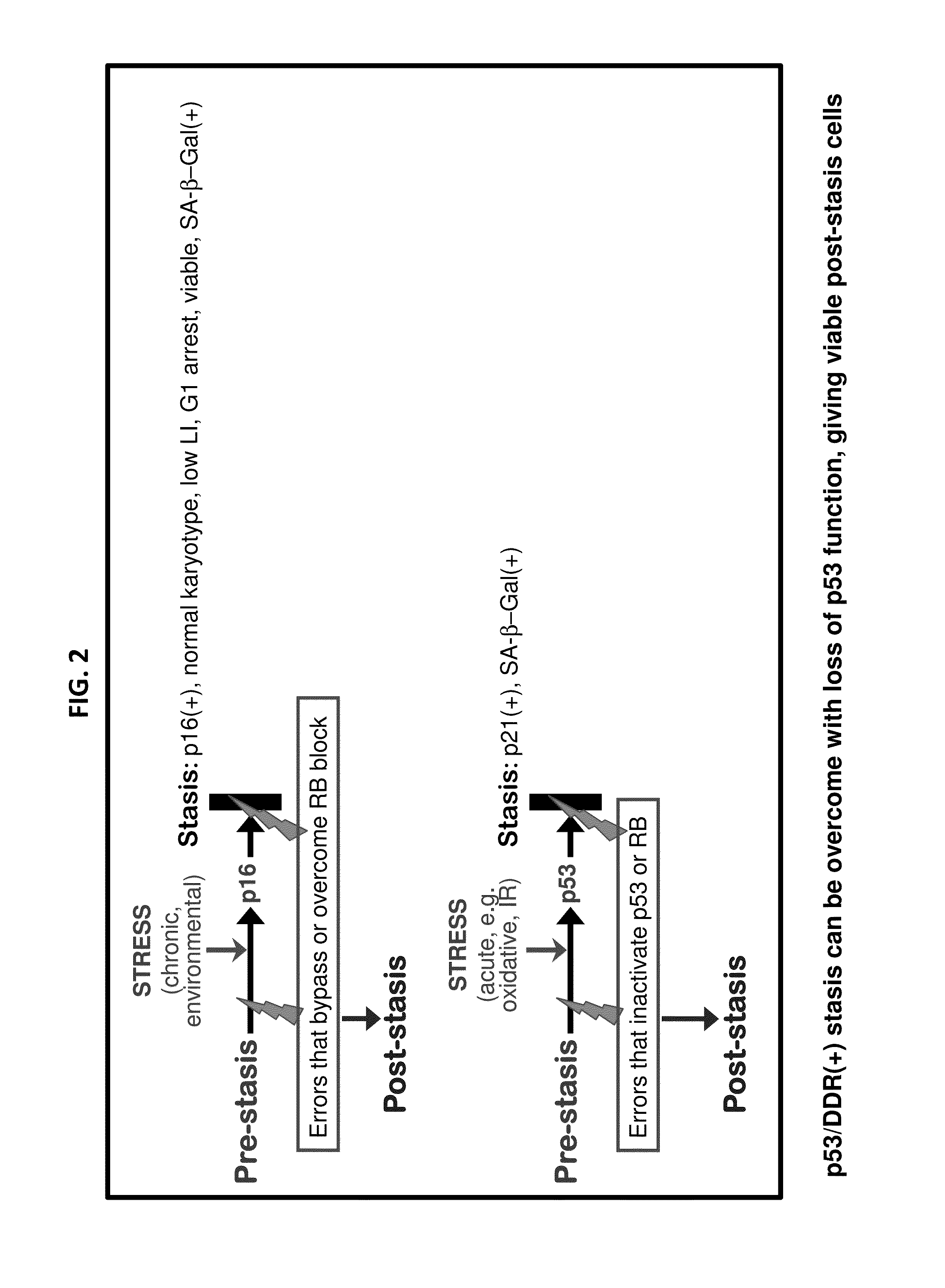Methods for Efficient Immortalization Of Normal Human Cells
a technology of epithelial cells and efficient immortalization, which is applied in the field of efficient immortalization of normal human epithelial cells, can solve the problems of limited potential and difficulty in identifying the driver errors responsible for immortalization using only in vivo tissues
- Summary
- Abstract
- Description
- Claims
- Application Information
AI Technical Summary
Benefits of technology
Problems solved by technology
Method used
Image
Examples
example 1
Immortalization of Normal Human Mammary Epithelial Cells in Two Steps by Direct Targeting of Senescence Barriers without Gross Genomic Alterations
[0087]Our previous studies have used pathologically relevant agents to transform normal finite lifespan human mammary epithelial cells (HMEC) to immortality 6-9. However, immortalization was clonal with multiple genomic errors present in immortalized lines 1, and the alterations specifically responsible for immortalization were not fully identified. The sporadic nature of the immortalization events has prevented examining the immortalization process as it occurs. We therefore sought to define a reproducible protocol, using agents that might recapitulate molecular alterations occurring during in vivo breast cancer progression, which could achieve non-clonal transformation of normal HMEC to immortality. Design of this protocol was based on our model of the tumor-suppressive senescence barriers normal HMEC need to bypass or overcome to attain...
PUM
| Property | Measurement | Unit |
|---|---|---|
| lengths | aaaaa | aaaaa |
| stress | aaaaa | aaaaa |
| resistance | aaaaa | aaaaa |
Abstract
Description
Claims
Application Information
 Login to View More
Login to View More - R&D
- Intellectual Property
- Life Sciences
- Materials
- Tech Scout
- Unparalleled Data Quality
- Higher Quality Content
- 60% Fewer Hallucinations
Browse by: Latest US Patents, China's latest patents, Technical Efficacy Thesaurus, Application Domain, Technology Topic, Popular Technical Reports.
© 2025 PatSnap. All rights reserved.Legal|Privacy policy|Modern Slavery Act Transparency Statement|Sitemap|About US| Contact US: help@patsnap.com



